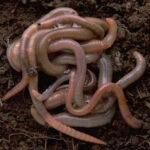Not too long ago I was having dinner with some friends here in Panama and as we spoke the conversation turned to something both shocking and disgusting. I was told a horrible story of an insect called the bot fly, which was a sort of fly that lays its eggs inside a host. The next thing you know there are little worms crawling around inside of your skin! So, naturally I had to check it out and as my friends suggested I headed over to youtube.com and watched a video on it; that was one of the most unpleasant things I have had to see in a long time. Afterward I did a lot on reading on the subject, gathering as much information that was available, which sadly does not seem to be much. However I wanted to share it with my readers, so that they could be aware of this horrible creature!
As it turns out there are actually many different kinds of bot flies, but the kind we are going to be looking at today is the human bot fly. The reason why we are going to look at that one is because it’s the only one we have to worry about at all. The human bot fly lays its eggs inside of a human being by first laying its eggs on a mosquito. Once the eggs have been planted on its host the mosquito then bites the human and through that bit the bot fly’s eggs are planted in the flesh of the victim. The larvae will grow inside the tissues under the skin for eight weeks as it develops. Luckily if you have a bot fly you shouldn’t be totally in the dark about it. You will have a wound of some kind, perhaps a sore or something that looks like acne. Although it will have a little hole in it, that is the breathing hole for the bot fly larvae.
Eventually the larvae will be mature enough to start trying to come out of the humans skin, at that point if you look at the wound you can usually actually see the larvae inside the hole where the larvae grew up inside. Bot flies also have little spines on them which they dig into their victim, making it somewhat difficult to remove them. Those guys do not want to be removed. Luckily though, there are some remedies that may help.
The first thing you should know about bot flies before you consider removing them is that even though it is completely disgusting to have one burrowed into your skin, they aren’t usually dangerous. As a matter of fact they are much safer to remove if you just leave them in for the eight week development process. The reason for this is because if you accidentally kill the larvae while trying to remove it, and they remain dead in the skin, or parts of them, then you run a much higher risk of infection. As a matter of fact it has been suggested that the living larvae secrets an anti-infection agent that protects the wound from becoming infected as long as the bot fly is alive and inside. However if you are like most people and are determined to remove them, here are a couple of suggested home remedies. I should mention first though that you should see your doctor about a bot fly before you ever try any home remedies and see what he has to say first.
The few different home remedies that have been suggested all pretty much have the same general idea to them. It’s a lot like removing a tick, bot fly larvae must have air in order to live, therefore cutting off their air supply with something like duck tape, or Vaseline is supposed to force them to come up for air, which will give you the chance to remove them. You can try to remove it with tweezers but be careful not to kill it or cut it in half as that could result in infection. It has also been said that if you apply pressure near the wound it can force to bot fly larvae out into the open, however this is more risky than putting Vaseline because the pressure could crush the bot fly and leave its dead body inside the human tissue.
So there you have it, now you have heard of a human bot fly and you have even learned some home remedies just in case you ever have to deal with one! I hope that this article has been informative and helpful, and made us all a little more aware of just one more of the little dangers in the world.






